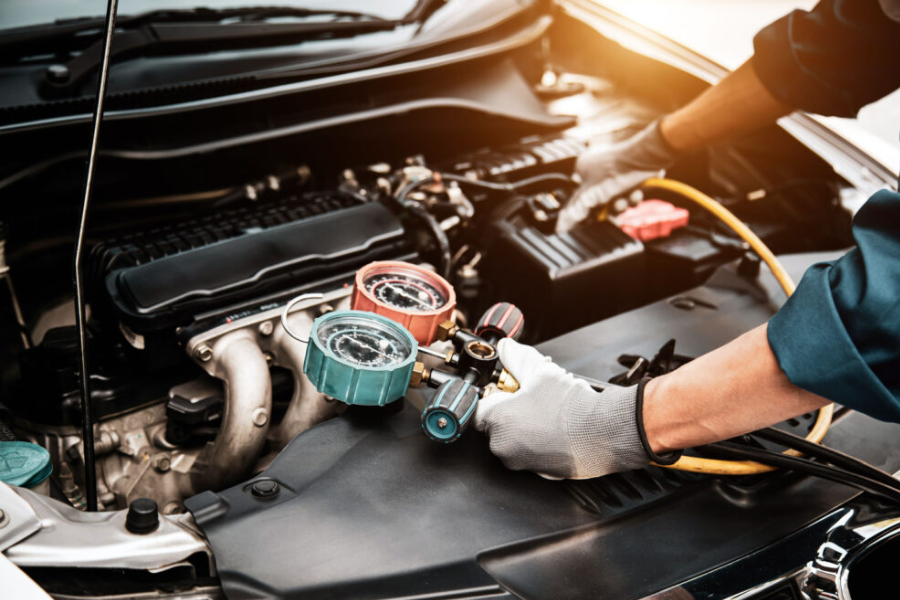A car heater not working is one of those problems that can quickly go from a minor inconvenience to a major frustration. On cold mornings, a functioning car heater is essential, but when it fails, it can make your drive uncomfortable or even dangerous. In this post, we’ll dive into the common causes of a malfunctioning car heater, how to troubleshoot, and what you can do to fix it. We’ll cover everything from minor issues you can easily address, to the more complex repairs that may require professional help.
Why Your Car Heater Does Not Work?
Before you rush to a mechanic, it’s helpful to understand why your heater might be malfunctioning. A heating system in a car relies on several key components, and if one of them fails, the entire system can stop working. Here are some common causes of a car heater not working:
1. Low Coolant Levels
One of the first things to check when your heater stops working is your car’s coolant levels. Coolant, or antifreeze, is responsible for regulating your engine temperature and providing heat to the heater core. The heater core is essentially a small radiator that blows warm air into the cabin. If the coolant level is low, the heater core may not be able to generate the necessary heat.
How to Check: To check coolant levels, locate the coolant reservoir in your car’s engine bay. It’s usually a translucent plastic tank with a marked “Low” and “Full” line. If the coolant is below the “Low” line, you may need to top it off.
Solution: If the coolant is low, refill it with the appropriate type of coolant for your vehicle. Most cars use a 50/50 mixture of antifreeze and water. Be sure to follow your car’s manual for the exact coolant specifications.
2. Thermostat Problems
The thermostat in your car plays a crucial role in regulating the engine temperature. It helps control the flow of coolant to the engine and the heater core. If the thermostat is stuck in the “closed” position, it can prevent coolant from flowing to the heater core, resulting in no heat in the cabin.
Signs of a Faulty Thermostat:
- The temperature gauge in your car shows either too high or too low.
- It takes a long time for the engine to warm up.
Solution: If you suspect the thermostat is faulty, it’s best to have a mechanic inspect it. Replacing a thermostat typically costs between $100 to $200, including labor.
3. Clogged Heater Core
Over time, the heater core can become clogged with debris, rust, and other contaminants that prevent the coolant from circulating properly. This will lead to poor or no heat output from the heater.
Symptoms of a Clogged Heater Core:
- The vents are not producing any heat at all.
- A sweet smell inside the cabin, which may indicate coolant leaking inside the cabin.
Solution: Flushing the heater core is the typical solution for a clogged heater core. In some cases, a mechanic may need to remove the heater core and clean or replace it. Depending on the car model, this can be a costly repair, often ranging between $500 and $1,000.
4. Broken Blower Motor
If the blower motor is malfunctioning, the air won’t blow through the vents, even if the heater is working fine. This issue is often accompanied by unusual noises from the blower or no airflow at all.
Signs of a Broken Blower Motor:
- No airflow from the vents, even when the fan is on.
- The fan is not responding to speed adjustments.
- A faint smell or unusual noises coming from the dashboard.
Solution: If the blower motor is not working, it may need to be replaced. Replacing a blower motor can cost anywhere from $300 to $700, depending on the car and labor rates in your area.
5. Electrical Issues
Modern vehicles rely on a network of electrical components to power the heater system. If there’s an issue with the electrical connections or a blown fuse, the heater may not work. For instance, a blown fuse can cause the blower motor or control panel to stop functioning.
Signs of Electrical Issues:
- A blown fuse typically causes the heater controls to stop responding.
- No power to the blower motor.
Solution: Start by checking the fuses. Refer to your car’s manual to locate the fuse box and identify the fuse for the heater or blower motor. Replace the fuse with one of the same amperage rating if the current one has blown. If the problem persists, it could be an issue with the wiring or control panel, and a professional mechanic should take a look.
6. Air in the Heater Core
Air pockets trapped in the heater core can prevent proper coolant circulation, causing the heater to blow cold air. This can happen if you’ve recently had a coolant leak or replacement, and air has gotten into the system.
How to Identify Air in the Heater Core:
- Cold air blowing from the heater even after the car warms up.
- Coolant leaks or low coolant levels.
Solution: Bleeding the cooling system can help remove the air trapped in the heater core. This process involves opening a valve or using a special tool to expel the air. If you’re not familiar with this procedure, it’s a good idea to have a professional mechanic perform the bleeding.
7. Faulty Climate Control Module
The climate control module is the brain of your car’s heating and air conditioning system. If this module fails, it can prevent the heater from turning on or adjusting properly. In some cases, you might notice erratic temperature changes or the inability to adjust the airflow.
Symptoms of a Faulty Climate Control Module:
- Inability to control the temperature or airflow.
- The system doesn’t respond to changes in settings.
Solution: Replacing the climate control module is typically a costly repair, ranging from $500 to $1,000 depending on the car make and model. If your car’s climate control module fails, you’ll likely need to have it professionally replaced or reprogrammed.
Step-by-Step Troubleshooting
If you find yourself in a situation where your car heater isn’t working, follow these steps to troubleshoot the issue:
Step 1: Check the Coolant Level
Start by checking the coolant level. If it’s low, top it off with the correct coolant. This simple fix can solve the problem if low coolant was the issue.
Step 2: Inspect the Thermostat
If the coolant level is fine, but your engine is taking too long to warm up, the thermostat might be stuck. A mechanic will need to replace the thermostat if this is the case.
Step 3: Test the Blower Motor
Listen to the blower motor when you adjust the fan settings. If you hear no sound or see no airflow, the blower motor might be faulty. In this case, you may need to replace the motor.
Step 4: Check for a Blown Fuse
If the blower motor works but there’s no heat, check for a blown fuse in the heater circuit. If the fuse is blown, replace it with a new one.
Step 5: Inspect the Heater Core
If there’s weak airflow or a sweet smell coming from the vents, the heater core may be clogged or leaking. You may need to flush or replace the heater core if this is the case.
Step 6: Address Electrical Issues
Check the connections to the climate control module and blower motor for any visible signs of wear or damage. If everything seems intact but the system still isn’t working, it may be an issue with the wiring or control panel.
When to Call a Professional
While many of these issues can be tackled with a little bit of know-how, some problems, like a clogged heater core or a faulty climate control module, may require professional attention. If your troubleshooting efforts haven’t solved the problem, or if you’re not comfortable handling the repair, it’s best to take your vehicle to a trusted mechanic.
Conclusion
A Car Heater Does Not Work can make your drives uncomfortable, especially in cold weather. By understanding the common causes of heater problems and following a logical troubleshooting process, you can determine whether it’s something you can fix yourself or if you need professional help. Always ensure that you’re using the correct coolant, checking for blown fuses, and replacing faulty components as necessary. If the problem persists, don’t hesitate to call in a mechanic who can fix it safely and efficiently.
Remember, keeping your heater in good working order is essential for both comfort and safety, particularly during the colder months when the last thing you want is to be caught without heat. Take care of your vehicle, and you’ll avoid many of these heating issues before they get worse!





